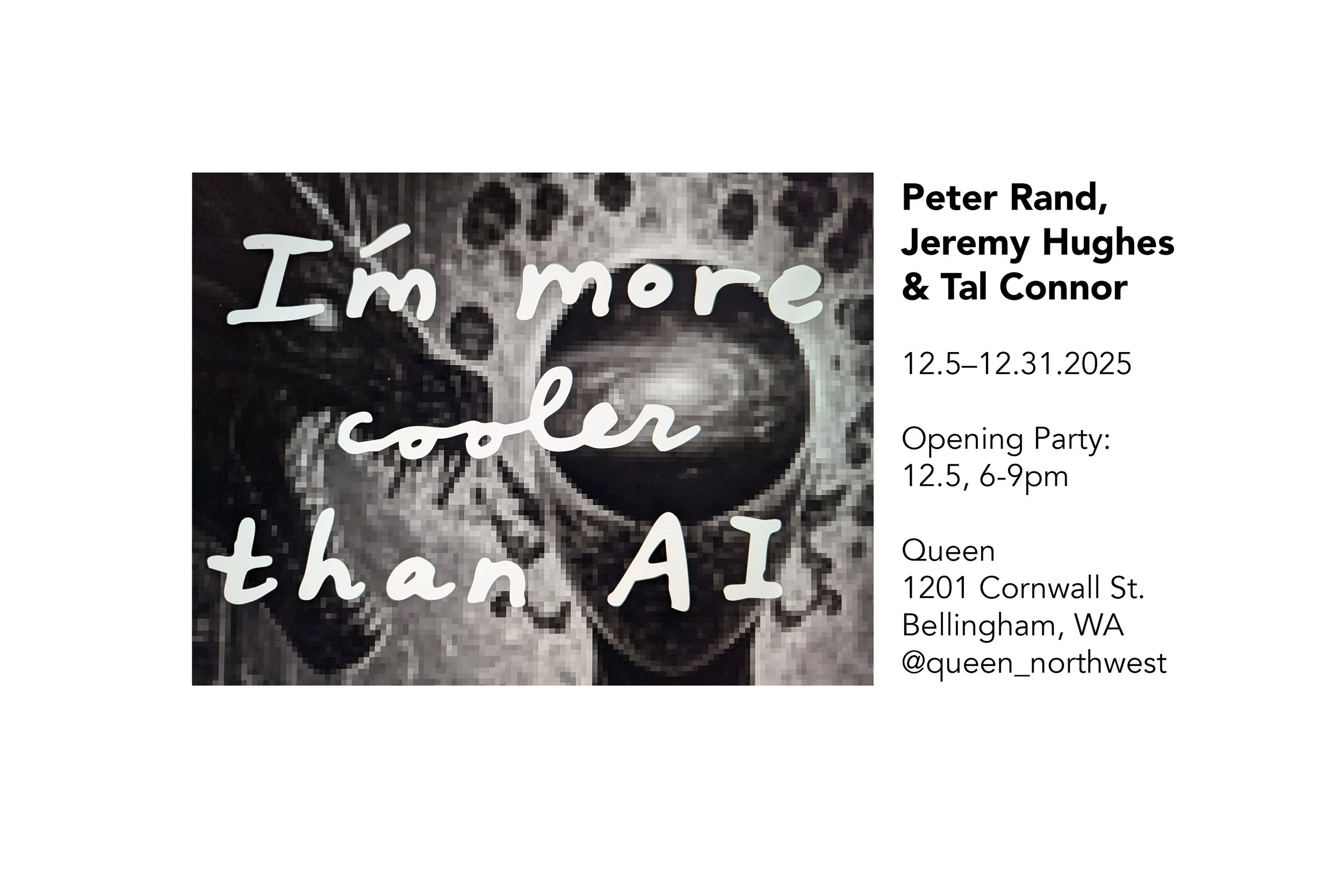Tal Connor and Jeremy Hughes are good friends with a history that includes meeting as neighbors, raising similarly-aged kids, a love of music, and most recently, a mail art collaboration that has resulted in thousands of sports card-sized drawings and collages. Their subjects are largely 20th Century references ranging from sports icons to rappers and artists; activists to cartoons; and in this recent, text-enhanced iteration, everyday folks determined to convey their need for one another.
Jeremy is a Bellingham collage artist from the Seattle area. His knowledge of popular culture and vintage ephemera is fractal. He deals records, has a consistent fadeaway jump shot, and owns more mini pocketknives than you.
Tal is a Bellingham abstractionist and portrait artist who paints and draws on paper. He is also a Montessori educator, which has informed interests in psychology, parenting, and sociology.
Peter Rand is an interdisciplinary artist. Many of his projects are documents of his own learning process and chronicle attempts to make sense of things that in the time of their inception, were unclear. His questions often have to do with the co-created space in which we find ourselves, and the indeterminate nature of an individual’s role within it.
Peter’s work has been exhibited internationally and he has collaborated on public art projects for the cities of Santa Monica, Dallas, and Rome. He has received a BFA in New Media Art from the University of North Texas, and an MFA from the School of the Arts & Architecture at UCLA.
